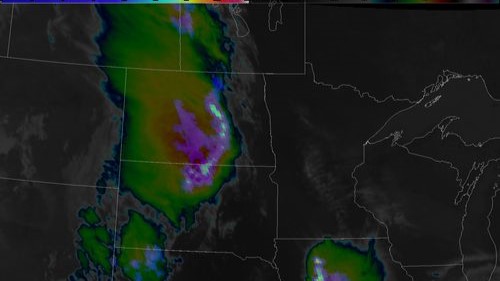Observing the daily weather is part of a regular routine for many of us. Knowing the weather helps us decide what to wear and which activities we will do each day. Meteorologists are scientists who study the weather and atmosphere. They observe conditions in our atmosphere to develop the weather forecasts that help us know what the weather will be like every day.
Forecasters observe factors like temperature, humidity, precipitation, air pressure, wind speed, and wind direction to help predict the weather. These same factors have been used since the first weather observations were recorded. However, the weather instruments that scientists use and the way that they analyze these observations have changed significantly. Basic weather observation instruments include thermometers, rain gauges, barometers (to measure air pressure), and anemometers (to measure wind speed). Examples of more sophisticated equipment are wind profilers, weather balloons (radiosondes), Doppler radar, and satellites. Even with all this equipment available, human observations still provide important information about sky conditions, clouds, and the type, size, and amount of precipitation.
Each day in the United States over 210 million weather observations are processed and used to create weather forecasts. These measurements come from automated instruments, professional meteorologists, and thousands of trained volunteer observers. Observations are recorded and uploaded into powerful computer programs that create weather forecasts for different regions and for the entire globe. Meteorologists in the 126 National Weather Service offices around the United States combine these larger forecasts with local observations and their knowledge of local weather patterns to make a weather forecast for their area. These forecasts provide the local community with important information. They can predict weather that affects people flying planes or steering ships. They can also predict severe weather, volcanic ash, snow fall, and air quality.









